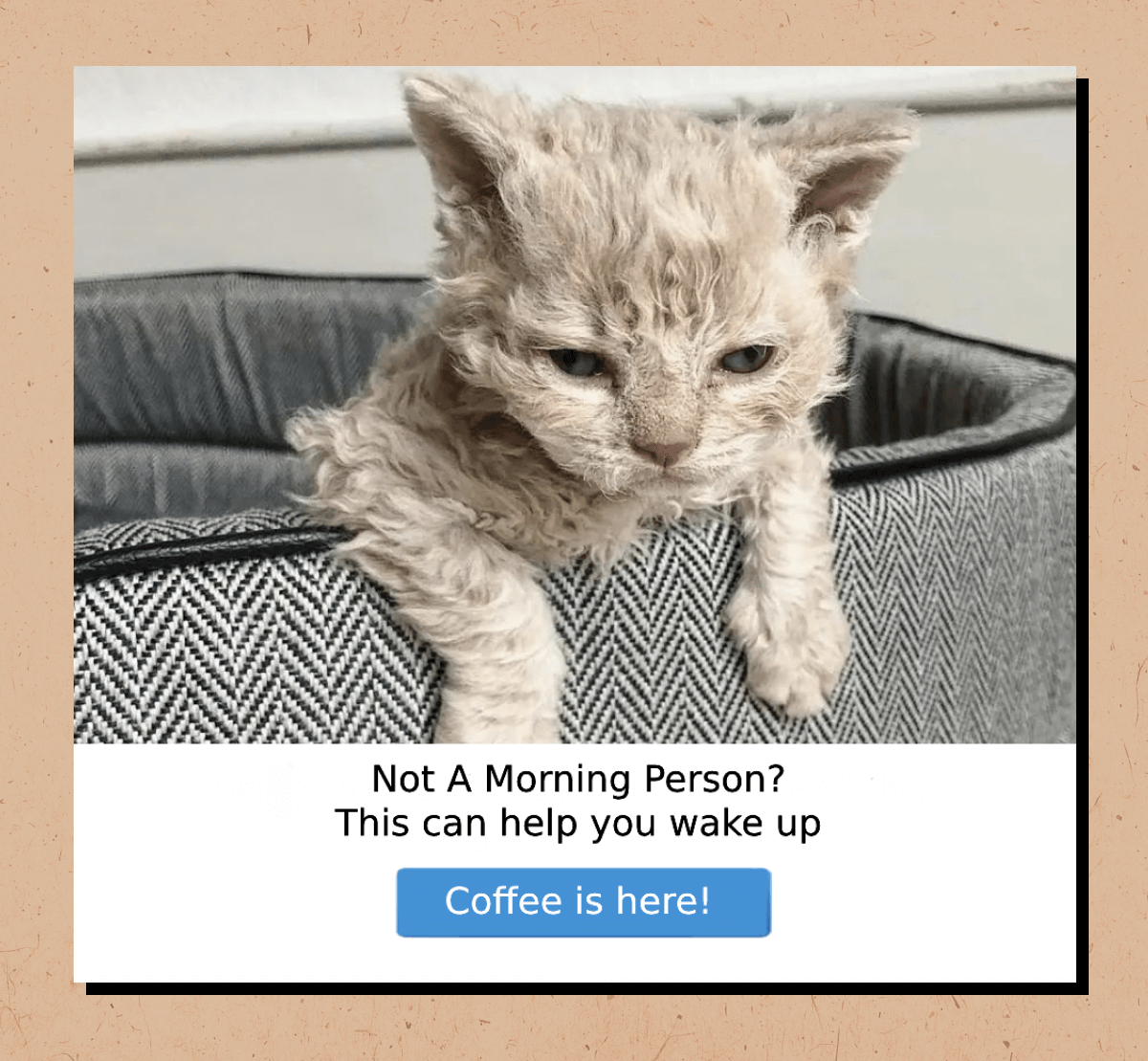Choosing the right CTA for your ad campaign is by no means a task you should take lightly. We all witness inefficient CTAs on a daily basis — they invite us to take a specific action in a generic manner, like thousands of other ads do. Suffice it to say, most users do not feel compelled to act on the behest of a generic CTA.
Since our advertisers can select which CTAs appear on their landing pages and in ad creatives, it’s paramount they understand what constitutes a successful and irresistible call to action.
Hopefully the examples we put together here today will help you understand what unique, specific and lighthearted CTAs are, and what one that boosts conversions looks like.
Pursue uniqueness
There’s nothing worse than a generic CTA, if you’re hoping to improve conversion rates. How many times have you seen a CTA that starts with the verb “Get” only to ignore it completely and not get what it asked of you?
That’s because there’s nothing tempting or convincing about such a call to action. You see it all the time, and it’s never really compelling enough for you to pursue the offer.
You should always choose your CTAs with uniqueness in mind. Don’t be afraid to explore ideas, push boundaries and be kooky with your CTAs. It’s going to make your CTA more clickable, and that’s precisely what calls to action are all about.
Feel free to get weird.

Can you tell what’s going on in the next CTA? It gets a lot of attention because there’s interestingly unique actions for the CTA language "hi-ya".

Websites can sometimes use themed CTAs that match the overall site design or an ongoing offer.

You can also theme a CTA around an upcoming holiday rather than a website design.

Here’s another Halloween-themed CTA.

Be specific but just enough
Generic calls to action don’t just lack uniqueness and vision — they universally fail to offer anything of value to the user. A CTA such as “try for free” is blatantly obvious as to what a person will be getting, but it’s so simplistic and ordinary that most will probably never go for it.
The only people that are going to click on such a CTA are the ones who already decided they’re interested in that product or service. That’s not what we’re discussing here today — we’re discussing CTAs that convert undecided customers.
To entice the undecided, a CTA needs to be both unique and specific. Being unique is great, but unless it’s crystal clear what the user is getting by taking action, not even the most unique CTA in the world is going to help you.
If possible, leave some room for mystery. There’s nothing that sparks curiosity more than wondering what kind of surprise awaits. Best CTAs will be specific enough, yet leave some room for speculation.


In some cases, you could make the option you don’t want users to click more specific than the desired response. Are you a complete Jira expert? Do you feel bold enough to refuse our guide? Most people will feel like they’re not really experts and opt-in to get the guide.

The following CTA makes it quite obvious and specific what you’re getting, but it is composed in a unique way.

Use humor and popular memes
In marketing, few things are worse than a brand that’s so out of touch that it can’t hide its inadequacy. Blindly going after the same advertising methods and forms that worked a decade ago just won’t cut it today. The only thing that could be worse is a company that’s rigid and formal in its communication with the audience.
Being lighthearted, cracking a joke here and there and staying in touch with popular trends is going to resonate much better with your audience than giving a lecture.
For starters, teasing your audience is always a neat trick.

Try to be closer to the audience and use informal, colloquial language.

Being humorous and unique at the same time is perhaps the highest virtue in the world of CTAs.

Or you might just boldly and jokingly claim that you’re the best!

Clever plays on words are also well-received.

The Internet loves cats, and if all else fails, cats certainly won’t, no matter what the CTA is.

Conclusion
Don’t be afraid to get creative. Fear of going beyond the tried and tested calls-to-action is setting your ad campaign up for failure.
Thinking outside the box leads to CTAs that convert and create lifetime customers who can appreciate a brand that sets itself apart from all the clutter. While striving to be different from others, you should still consider matching your CTAs with other elements of the ad creative such as the headline, text and visuals.
It takes courage to be different and to try something no one else has tried before you, but the rewards of creativity and uniqueness are indeed substantial.





